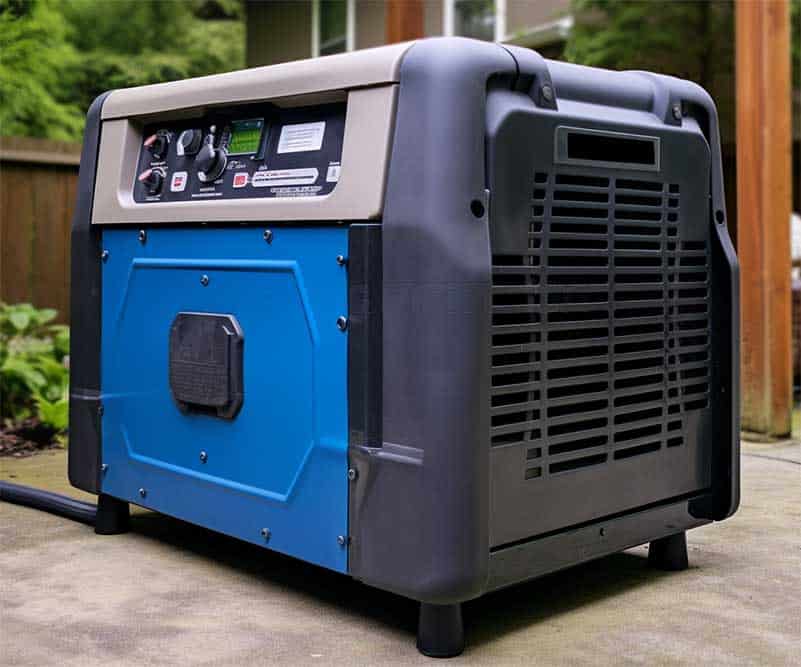14 Electrical Upgrades Worth Making in a Home – Part 1

Pro Tip: Your Safety is Worth These Critical Upgrades
There are electrical upgrades and repairs you MUST consider before listing your home or when you start planning an addition. As a residential electrician in San Antonio for almost 30 years, All Star Electric San Antonio has fixed well over 10,000 critical electrical issues in homes around the city. Many were obvious problems: sudden malfunctions, missing safety devices, overloaded circuits… But in a lot of other cases, the issues were hiding, difficult to trace, and only intermittent. All would have flunked an electrical inspection.
This is why, over the years, we have developed thorough electrical inspection procedures. They make it faster for us to trace any electrical failure back to its root cause. They also help us discover code violations. Home inspectors will flag them when you prepare to list your home or build an addition.
We confidently share with you common critical issues we worked on doing residential electrical repair work. Use it, you can’t go wrong with it.
I. Two Lists of Electrical Upgrades to Consider

Here are two lists. The first contains 7 electrical code violations any inspection will flag. The second shows 7 other major electrical issues to fix before listing your home or building a new addition. Of course, we found way more than 14 issues along the past 30 years. But a complete list would be very tedious to read, and definitely not practical.
Obviously, your home may be totally fine and have no need to proceed with these electrical upgrades. Truth be told, newer homes afford much better electrical safety than older ones. Our advice: just use these lists to assess your level of risk exposure. Call (210) 391-0274 to request an electrical safety inspection or need to update your electrical installation.
| 7 Critical Electrical Code Violations | 7 Other Major Electrical Issues |
|---|---|
| Improper Grounding Overloaded Circuits Missing AFCIs Missing GFCIs Incorrect Wiring Type or Size Improper Junction Box Installation Faulty Installation of Electrical Panels | Outdated Electrical Wiring Obsolete Electrical Service Panel Insufficient Electrical Outlets Poorly Installed or Damaged Light Fixtures Unprotected Outdoor Electrical Systems No whole-house surge protection Improperly wired switches/outlets |
In the next section of this article, we go over the code violations and what type of risks they raise. We will cover the list of 7 other major electrical issues in Part II of this article.
II. 7 Critical Code Violations Warranting Electrical Upgrades
1. Improper Grounding of Electrical Systems (NEC 250)
You want to make sure that the grounding of all your electrical systems is proper. This includes grounding electrical panels, outlets, and fixed appliances. Improper grounding raises the risk of electrical shock. This happens when where your body becomes the path through which electricity travels to find the ground. This code violation also increases the risk of electrical fires (when electricity travels through flammable materials). Finally, it can result in frying your electronics, which is very inconvenient and costly. For your reference, Article 250 of the National Electric Code covers grounding issues.
In our experience, the two main situations in which we find an electrical installation improperly grounded are:
- The installation was DIY’ed or done by non-licensed electricians.
- Components of the installation have deteriorated with age, got corroded or became loose.
The grounding job was originally right. However, weather and electrical arcs corroded the metal… to the point that there is no grounding anymore. These situations are serious and require immediate electrical upgrades.
Does your grounding require an electrical upgrade?

You can feel small electric shocks handling an appliance, switch, or metal object connected to an electrical circuit. The severity of these shocks can vary. They are dangerous however, especially for young children and people with a pacemaker.
There may be a grounding problem if your lights start flickering without warning. Or your circuit breakers just trip too often.
All these situations require a professional diagnostic done by a licensed electrician. You can’t DIY the grounding of your home. Better safe than sorry: call us at (210) 391-0274 to perform an electrical safety inspection. Ask us for a quote to perform the necessary electrical upgrades.
2. Overloaded Circuits (NEC 210.20(A))
What’s a circuit overload? When too many electrical devices operate on a circuit, drawing more current than it is designed for, this is an overload.
Each appliance on a circuit draws a certain amperage. Let’s say 40 Amps for your electric range. At 130 Volts, your range would theoretically have a power draw of 5,000-6,000 Watts. The rating of a typical circuit breaker for a kitchen is 40-50A. This is plenty enough to handle your electric range. But if the circuit receives too many high-power appliances, a circuit can overload. This situation would require electrical upgrades at the service panel level.
What are the telltale signs of a circuit overload?

- Circuit breakers are tripping frequently.
- Lights are flickering or dimming.
- Outlets and switches start buzzing weirdly.
- Electrical outlets and wall plates are overheating.
- Outlets or switches give off a burning smell.
If you suspect this might be the case, especially if you smell that an outlet is overheating or some smoke is coming out, shut down all the appliances and keep only the lights you need. Call licensed electrician All Star Electric San Antonio at (210) 391-0274 as soon as possible to review the situation. Don’t wait. This is a critical issue.
It may not possible to shut down all your appliances (for medical reasons, for instance). Keep operating only those that are absolutely necessary. The goal is to lower the power draw to within the rating of the circuit. This should allow the heat to dissipate.
In any event, this is always a bad situation that calls for immediate electrical upgrades.
3. Missing Arc-Fault Circuit Interrupter Protection (NEC 210.12)
Let’s first clear up what’s an AFCI.

Electrical wiring can show signs of damage, wear, or stress. This happens over time through loose connections, insulation breaks, or pinched wires. In these situations, the electrical current can start flowing through a wrong path: outside of the wire itself. Literally, electricity can “jump” through the air wherever the insulation sheath broke and create an arc (visible or invisible). This unintended phenomenon is called “an arc fault”.
An arc generates an intense heat. If the sheath is broken where the wire goes through flammable material, you got a real problem on your hands. Electrical fires often start in hidden areas (e.g. behind sheet rock, in an attic, under a floor). If you don’t suppress them quickly, they propagate without restraint. Then your home can wind up as a heap of ashes and burning ambers.
Fortunately, manufacturers of electrical devices came up with AFCIs in the early 1990s. AFCIs are interrupters that protect electrical circuits from fires caused by arc faults. An AFCI monitors the electrical circuit for signs of an arc fault.
How an AFCI works
- Detection of arcing conditions: The AFCI continuously monitors the waveform of the circuit. By design, it is capable of distinguishing between normal and hazardous arcing conditions.
- Differentiation between types of arcs: The AFCI identifies benign arcs and dangerous arcs. A benign one would be like what you see when you pull a plug from a socket.
- Interruption of the circuit: When it detects a dangerous arc, the AFCI interrupts power to the circuit. When no electricity flows, the underlying conditions of the arc stop existing.
- Prevention of electrical fires: When there is no arc, there is no dangerous heat. The risk of electrical fire decreases significantly.
The National Electrical Code made AFCIs mandatory in bedrooms in 2002. Since then, regulators have progressively expanded the scope of the rule. Today, homebuilders install these electrical upgrades systematically in:
| Bedrooms Family rooms Living rooms Parlors Libraries | Dens Closets Hallways Similar rooms or areas |
Are electrical upgrades required?

Chances are, if you bought a home built before 2002, it misses the AFCIs it needs. The NEC mandates AFCI protection at the circuit level. Any circuit that supplies outlets (e.g., indoor receptacles, lighting fixtures, smoke alarms, etc.) must receive AFCI protection.
NOTE: A home built before AFCIs became mandatory would be grandfathered. Technically, it would NOT be required to have AFCI protection for all its original rooms. BUT if you added or remodeled a room, missing AFCIs would not comply with code. Your home would fail an inspection and this would be added to any real-estate report before a sale. Outside of this aspect, it makes total sense to upgrade circuits with AFCIs from the standpoint of safety.
Should you install AFCIs anyway?
In our professional opinion, there is no doubt that all your circuits must receive AFCIs. Just consider the terrible consequences of an electrical fire. Would any amount of savings ever justify incurring the risk not protecting your home against electrical arcs? Definitely not.
We recommend all our clients to have these electrical upgrades done on their service panel. To install AFCIs, call All Star Electric San Antonio at (210) 391-0274 and let’s assess your situation.
4. Missing Ground-Fault Circuit Interrupter Protection (NEC 210.8)
Article 210.8 of the National Electrical Code mandates GFCI protection in wet or damp areas: bathrooms, kitchens, garages, and outdoors. We discussed how GFCIs work and why they are beneficial in another article on our site. Please refer to it to get more information in this regard.

To be clear, most homes today have GFCIs where required. In our experience, only very old homes are still missing GFCIs. Like for AFCIs, older versions of the NEC may grandfather these homes. In this case, not having GFCIs would not be a code violation.
However, realtors and inspectors would definitely mention this in their reports. That could be a cause for concern for the buyers (what else is wrong with this home?). Better proceed with these electrical upgrades before sowing the seed of doubt in the minds of your buyers.
What we see more often however, is an incorrect installation of the GFCIs. The real danger in this situation is that people think they get protection… NOT. The issue is usually traceable to DIY work, or work done by a non-licensed electrician. Any electrical inspection would flag this code violation.
Make sure your installation is code-compliant: GFCIs in all the right places, with the right wiring, at the right height. Call All Star Electric San Antonio at (210) 391-0274 to request an electrical safety inspection. If we find code violations requiring electrical upgrades, we will give you a fair quote to fix them immediately.
5. Incorrect Wiring Type or Size (NEC 310.15)
Electrical wires must be of the correct type and size to carry safely their electrical load without overheating. Section 310.15 of the NEC deals with the capacity of wiring to carry electrical current within its temperature rating.

There are many factors that an electrician has to take into consideration to select the right wiring for the task. Among those:
- Number of wires in a conduit
- Load adjustments
- Temperature correction factors
- Conditions of use
- Voltage drop over the length of the wire
- etc.
We won’t bore you with all the details. Let’s just say that errors can happen, the needs of a household change, and new rules come about. At some point, the wiring may be of the wrong type. Code rules are not far-fetched. Electrical engineers wrote them to prevent wiring to overheat and avoid the associated risks of electrical fire.
Inspectors will look carefully at the type/size of the wiring to ensure it doesn’t expose a household to these risks. The inspection will recommend all necessary electrical upgrades.
The calculations required to determine the right wiring size/type are complex. For this reason, we advise homeowners to DIY this task, even if they are familiar with electricity. They will fail code inspections, and worse, expose their family to a dangerous risk. You want to be certain wiring is of the right type/size everywhere in your home. Call All Star Electric San Antonio at (210) 391-0274. Schedule your electrical safety inspection. We will give you a free and fair quote to perform electrical upgrades.
6. Improper Junction Box Installation (NEC 314)
Junction boxes must be properly installed, accessible, covered, and large enough to prevent wire overcrowding. Wire overcrowding can lead to overheating and fires. Clearly, most electrical upgrades and safety rules have to do with preventing the risk of fire.
Self-checking your junction boxes for compliance with code
For the die-hard DIY enthusiasts out there, here is a non-exhaustive list of rules junction boxes must comply with.
Note: As a San Antonio licensed electrician, we have to insist that this self-check is not an inspection. Follow it up with an electrical safety inspection done by a licensed electrician. This list is for informational purpose only. It is not a complete “to-do” list.

Size and Wire Fill
The size of a junction box must be appropriate size for the number and size of conductors entering the box. The NEC provides guidelines for the minimum box size. They are based on the number of conductors, their gauge, and the type of fittings used. The goal is to prevent overcrowding, overheating, and damage to the insulation.
Cover Requirement
You must affix a proper cover on the junction box to prevent accidental contact with live parts. The cover also protects the conductors inside from physical damage. It should be secure and fitting the box and the installation environment.
Accessibility
All boxes must be readily accessible. They can’t be hidden behind walls or ceilings. They can’t be in places where the building structure would prevent accessing them.
Volume Allowance
The volume of a junction box must be sufficient to allow free heat dissipation and avoid overheating of wires. The NEC specifies how to calculate the box volume required. This is based on the number and size of conductors and devices placed in the box.
Secure Installation
Your boxes must be securely fastened in place. They should be mounted so they are unlikely to be displaced. They must be fastened strongly enough to withstand normal wear and tear, and the mechanical stresses placed upon them.
Protection from Physical Damage
Where necessary, these boxes must be installed to protect them from physical damage. This can require the use of thicker walls, protective covers, or installation in less vulnerable locations.
Wire Splicing
Conductors inside a junction box must be spliced together properly, using suitable connectors and following the manufacturer’s instructions. Splices must be made with conductors of the same material and be electrically and mechanically secure without solder.
Grounding
Per NEC, metallic junction boxes must be grounded and bonded. Grounding conductors must be connected to the box and to all the contained devices. This ensures a continuous path to ground.
Cable Clamps
Cables entering the box must be secured with proper clamps and fittings. This relieves strain on the box and protects the insulation from damage. Clamps must be installed as per NEC specifications and manufacturer’s instructions.
No Obstructions
Most junction boxes are not made to support light fixtures, fans, or equipment. Some boxes are designed specifically for that purpose. Electricians must install them according to NEC guidelines.
Barrier Installation
In certain applications, a box may require barriers within to separate different systems, such as power and data cables. This is to prevent induced voltages and interference.
After doing a self-check, if you suspect any non-compliance, call a licensed electrician to perform the necessary electrical upgrades. Don’t wait for an inspector to discover the code violation. Don’t delay the repairs and risk a fire starting in your home. Call All Star Electric San Antonio at (210) 391-0274 to receive a free and fair quote. There is no commitment on your part.
7. Faulty Installation of Electrical Panels (NEC 110.26)
What does the code say about the location of your electrical panel? It must be readily accessible and have adequate working space clearance. It can’t be located in closets or other confined spaces. This is to prevent electrical hazards (fires).

This is an issue we very rarely meet. The vast majority of electrical panels we inspect and upgrade are affixed to an outer wall.
There was a period before the 60s and the 70s where homebuilders installed service panels in closets, inside homes. The National Electrical Code forced this situation to change in the 80s.
A more common situation
What we see more often today is undersized service panels, installed 20-30 years ago. These can’t usually handle the total electric load of a household today, with many more electronic devices and appliances. We can upgrade these panels or replace them. Breakers that trip often are a telltale sign of an undersized panel.
Fuse boxes
Finally, we sometimes (rarely) stumble upon fuse boxes. This is a technology that pre-dates panels with circuit breakers. If you are not familiar with them, that’s because you don’t have one.
Just for your understanding, a fuse consists in a metal wire (filament) in a glass tube. When the current flowing through it exceeds a predetermined level, the fuse melts and breaks the electrical connection. This mechanism prevents electricity to flow and protects the circuit on which it is installed.
In fuse boxes, fuses play the role of circuit breakers. When they melt, you have to replace them. This is a single-use device, definitely less convenient than a tripped circuit breaker which you can simply reset to ON.
Fuse boxes are also less reliable, for at least two reasons:
- Any untrained person can replace a broken fuse with one of an amperage higher than what the circuit can handle. Let’s take an example. Say, you replace a 15A fuse by a 30A fuse on a circuit designed to handle 15A. This new fuse won’t melt when the current draw exceeds 15A. If the circuit overheats, you now have a fire hazard to deal with.
- Fuse boxes can’t receive GFCIs and AFCIs either, which makes them absolutely non-compliant with current code.
Fuse Box: A Sign Multiple Electrical Upgrades Are Required
When inspecting a home with a fuse box, we invariably find that it needs all kinds of electrical upgrades. The fuse box is just the tip of the iceberg. Usually, the wiring is corroded and of the wrong type (e.g. aluminum instead of copper). There are multiple cracks and failure points in the wire sheath. The junction boxes are old, outdated. We can’t find any GFCIs. The list is long…
If you inherit a home with a mislocated service panel, don’t bring in modern appliances just yet. First things first: bring its electrical installation up to code. This will avoid the risk of starting a fire. Call All Star Electric San Antonio at (210) 391-0274 to request a professional inspection. We will give you a quote for all electrical upgrades necessary.
These 7 Code Violations Warrant Electrical Upgrades
We hope you found some valuable information in this first list of critical code violations. We will soon publish Part II of this article about 7 Other Major Electrical Issues.
As professional licensed electricians, we know that an ounce of prevention is worth a pound of cure. When an electrical fire becomes visible, it is often already too late to stop it. It started earlier, hidden in some nooks and crannies. It already propagated elsewhere, in places difficult to reach (attic, behind sheet rock walls, under a floor).

Code violations are inevitable…
Code violations occur because all electrical installations age and the electrical material itself becomes brittle, corroded, defective. They also happen because someone didn’t call a licensed electrician to do the work. They just hired Billy Bob who was so much cheaper. Unfortunately, Billy Bob was a drunk and not much of an electrician. He had no license either and no professional liability insurance. So, that unprotected circuit overheated and set the whole house on fire. And now, the homeowners find themselves without a home and in a pickle with their home insurance policy.
… Just don’t wait to do the necessary electrical upgrades
Don’t put yourself in this situation. Call a licensed electrician like All Star Electric San Antonio to perform a serious electrical safety inspection. If anything is wrong, we will find it before it gets worse. This gives you time to do the necessary electrical upgrades and keep your family safe.
Call San Antonio electrician All Star Electric San Antonio at (210) 391-0274. We have 30 years of experience operating as an electrical contractor. We do all types of electrical work: repairs, service panel upgrades, rewiring, remodeling, LED lighting, EV chargers, etc. No job too small, no job too big. We have kept our A+ rating at the BBB San Antonio since we became member, in 2009. We offer a 2-year labor warranty to give you peace of mind. This is how confident we are in the quality of our work. Let’s discuss your project: we will give you a free and fair quote for it, with no commitment on your part.




























